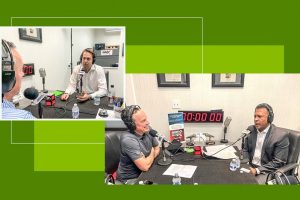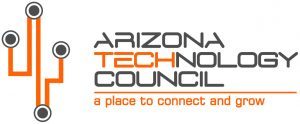Please log in to view this content
Using the Super Premium Option
Get Clear on Your Best Fit Client
Ignore Sunk Cost
Providing VIP Services
The Benefit of Inside Intelligence
BRX in the News
20 Best Georgia Business Podcasts
January 12, 2025 (Originally posted on FeedSpot)
 9 of our Business RadioX® Studio Partners are on this list out of thousands of podcasts on the web.
9 of our Business RadioX® Studio Partners are on this list out of thousands of podcasts on the web.
The best Georgia Business podcasts worth listening to in 2025 from thousands of podcasts on the web and ranked by relevancy, authority, social media followers & freshness.
On the Air: Regions Business Radio
September 2021 (Image and article originally posted on doingmoretoday.com)
 In the ‘Golden Age of Radio,’ listeners in the 1930s were regaled with commentary on current events, news, entertainment, sports and, of course, business.
In the ‘Golden Age of Radio,’ listeners in the 1930s were regaled with commentary on current events, news, entertainment, sports and, of course, business.
Fast-forward to the digital age, where media consumption stretches beyond the innovative imaginations of Guglielmo Marconi and Aubrey Fessenden.
Regions commercial banker J.D. Mealor, who has a background in mass communications, embraced the digital medium and found a calling behind the mic. Marrying the gift of gab with his financial prowess, Regions Business Radio was born.
Gwinnett Chamber Announces Ambassadors Council
August, 2021 (Image and article originally posted on Patch)
 Our own Mike Sammond (Gwinnett Business RadioX) was chosen to serve on the Ambassadors Council at the Gwinnett Chamber.
Our own Mike Sammond (Gwinnett Business RadioX) was chosen to serve on the Ambassadors Council at the Gwinnett Chamber.
An extension of Gwinnett Chamber staff, the Ambassadors Council are volunteers who donate their time and talent to engage, encourage, and expand business relationships on behalf of the organization.
Recognized as area leaders, nearly 40 professionals have been chosen to sit on this important council.
Arizona Technology Council Wins First Place in Public Policy Advocacy in 2021 Technology Councils of North America Innovation Awards
July, 2021 (Originally posted on PrZen)
 The Arizona Technology Council today announced it was named a winner in the Public Policy Advocacy category and a finalist in the Creative Marketing & Communications category in the 2021 Technology Councils of North America (TECNA) Innovation Awards.
The Arizona Technology Council today announced it was named a winner in the Public Policy Advocacy category and a finalist in the Creative Marketing & Communications category in the 2021 Technology Councils of North America (TECNA) Innovation Awards.
TECNA, which represents approximately 60 technology associations across the United States and Canada, hosts the awards each year to recognize and honor technology council staff and teams who are integral to developing and implementing innovative and impactful work on behalf of a tech association.
Arizona Technology Council sponsors AZ TechCast on Phoenix Business RadioX. Owner Karen Nowicki has been a part of helping the ATC be recognized as a finalist in the Creative Marketing & Communications Category.
Meet Stone Payton: Managing Partner at Business RadioX ® Network
June 29th, 2021 (Originally posted on Shoutout Atlanta)
 We had the good fortune of connecting with Stone Payton and we’ve shared our conversation below.
We had the good fortune of connecting with Stone Payton and we’ve shared our conversation below.
Hi Stone, what is the most important factor behind your success?
SERVING. We made the decision from Day One to be a Pro-Business, Earned Media platform.
We never charge Guests to join us On Air to share their story and promote their work. And on the client side of our work (where we do charge a subscription fee, and do make money), the product itself is a customized platform (media property) specifically designed to help our clients SERVE their clients in the same way . . . helping their key customers, best prospects, and most trusted market partners Get The Word Out about the great work they’re doing for their market, their community, and their profession.
We find that most Business Leaders really want to serve — and serve their entire ecosystem well beyond simply providing their particular product or service. And we’re so blessed at Business RadioX ® to have the systems, and the people who can help them do that.
Amanda Pearch of Business RadioX® Named Gwinnett Young Professionals 35 Under 35 Award Recipient
Gwinnett County (METRO ATLANTA) GA – Released June 21, 2021
 Business RadioX® is pleased to announce that Amanda Pearch, the Chief Marketing Officer (CMO) for the Business RadioX® studio in Gwinnett County, has been named as one of the Gwinnett Young Professionals (GYP) 35 Under 35 Award Recipients. The awards were announced recently during the organization’s annual party celebrating the mission behind GYP and the thriving young professionals in the community.
Business RadioX® is pleased to announce that Amanda Pearch, the Chief Marketing Officer (CMO) for the Business RadioX® studio in Gwinnett County, has been named as one of the Gwinnett Young Professionals (GYP) 35 Under 35 Award Recipients. The awards were announced recently during the organization’s annual party celebrating the mission behind GYP and the thriving young professionals in the community.
In her leadership role as the Chief Marketing Officer (CMO) with Gwinnett Business RadioX®, Amanda has taken the studio’s brand awareness to new heights while creating new strategic business relationships. She also serves as an on-air host of the “Celebrating Powerhouse Women” series and is an occasional guest host on “Gwinnett Business Radio“.
She has a tenured career in sales and marketing, specializing in brand awareness and driving engagement. Energizing and engaging, she is an active participant within the business community and you can often find her at business networking and civic events. Amanda currently serves on the advisory boards for Gwinnett Young Professionals and the Hudgens Center for Art & Learning.
Assisting Small Businesses in Atlanta and Beyond
May 21, 2021 (originally posted on GeorgiaTrend)
 According to the U.S. Small Business Administration, there are more than a million small businesses in Georgia, representing over 99% of all companies in the state. Coming out of the pandemic, a number of resources are available to help owners bounce back.
According to the U.S. Small Business Administration, there are more than a million small businesses in Georgia, representing over 99% of all companies in the state. Coming out of the pandemic, a number of resources are available to help owners bounce back.
Among the resources gaining popularity with a growing audience is the Sandy Springs-based Business RadioX, a podcast network that now has studios in 16 states.
The network itself is a local success story and the goal of its podcasts is to help business leaders share the work they’re doing to serve their communities.
Podcasters Find Niche in BusinessRadioX®
May 14, 2021 (originally published on ajc.com)
 Lee Kantor was onto something when he co-hosted “Dr. Fitness and the Fat Guy” in 2007.
Lee Kantor was onto something when he co-hosted “Dr. Fitness and the Fat Guy” in 2007.
Podcasting.
In those early days, it was called internet radio and Kantor and Adam Shafran featured fitness and wellness gurus such as the late Jack LaLanne and Denise Austin who discussed their books or DVDs at the time, Kantor said.
Kantor, who describes himself as an introvert, was “the Fat Guy” and Shafran was “Dr. Fitness.” Their schtick was somewhat of a comedy show, Kantor said.
“We were one of the places (the experts) would go to tell their stories,” he said. “I saw this was an effective tool to build relationships.”
Exploring Life & Business with Lee Kantor of Business RadioX®
May 13, 2021 (originally published on Voyager ATL)
 Today we’d like to introduce you to Lee Kantor.
Today we’d like to introduce you to Lee Kantor.
Alright, so thank you so much for sharing your story and insight with our readers. To kick things off, can you tell us a bit about how you got started?
I founded Business RadioX® with the intent to create a media platform that supported and celebrated the small to mid-sized business leaders in Atlanta. I felt that the smaller players tended to be ignored in traditional media and I wanted to build a network where their stories could be told and that their work could be shared and appreciated.
One of the guests (Stone Payton) on one of the shows I produced (Atlanta Business Radio) became a client then became my business partner. Together, we are expanding the Business RadioX® network around the United States by partnering with like-minded entrepreneurs who want to serve their community by becoming the “Voice of Business” in the markets they live in.
Business RadioX®: Raising the Voices of the Business Community
September 8, 2020 (originally published in Our Town Gwinnett Monthly Magazine)
 In the best of times and in the worst of times, one thing is true for all business owners: they need an outlet to let their voice be heard.
In the best of times and in the worst of times, one thing is true for all business owners: they need an outlet to let their voice be heard.
While each business address-es this need in its own way, there are several Gwinnett businesses that have taken advantage of one of the best resources in town to get their message to the community.
It might not be what you think it is – unless, of course you were thinking of Business RadioX.
The $100k/yr. Franchise Opportunity Helping Small Businesses Grow
September 24, 2019 (originally published on trends.co)

Have you ever wanted to create your own podcast? How about one that brings in $100k/yr. while helping small businesses grow?
Then you should meet Lee Kantor, founder of Business RadioX, an Atlanta-based small-business radio/podcast network that can be replicated in any market.
What started as an Atlanta radio show––Mr. Fitness and the Fat Guy––has evolved over the past decade into a 9-city franchise, with plenty of room to grow.
Sharing Your Small Business Story On Demand – Mike Sammond, Business RadioX®
December 7, 2018 (originally published on ASBN)
 Finding investors and potential customers for your new startup is no easy task. However, having your small business featured on the right platform can make all the difference, and our guest today knows a thing or two about branding on a large scale.
Finding investors and potential customers for your new startup is no easy task. However, having your small business featured on the right platform can make all the difference, and our guest today knows a thing or two about branding on a large scale.
Joining us today, is Mike Sammond, owner, producer, and host of Business RadioX®, one of the fastest growing online radio networks in the country.
Business RadioX® aims to be the voice of business in all of the communities that they serve. Like ASBN, Mike believes that small business is the backbone of every town or city.
Mike explains, “There’s so many great business people out there that are working hard every day; we want to help share their story and get it out there.”
6 Positive Business Stories During The Pandemic
What is one positive business story that transpired during the pandemic?
This pandemic has been tough on many of us, so we asked business owners and entrepreneurs this question for their pandemic business stories. From thriving through innovation to leaning into virtual recruiting, there are several ways businesses found ways to stay afloat and keep working towards a positive future.
Here are six positive business stories that transpired during the pandemic:
- Thriving Through Innovation
- Educating Employees on Cybersecurity
- Improving Living Spaces
- Training New Career Seekers
- Helping Teachers Navigate Virtual Schooling
- Leaning Into Virtual Recruiting
Thriving Through Innovation
I found myself starting a new job straight out of college in the middle of the pandemic. I began my career from home, doing my training entirely on Zoom, never having met the majority of the coworkers or clients that I work with on a daily basis. While there was uncertainty at every corner, I was thankful to have a job when so many others were not as fortunate and kept the mindset that I was going to do everything in my power to make the most of my situation. Through company innovations and the launching of a knowledge-based platform, I was able to take on responsibilities that wouldn’t have presented themselves without the pandemic. Almost a year later and I am flourishing in my role, and my company is growing every day.
Kayla Centeno, Markitors
Educating Employees on Cybersecurity
Early in the pandemic, we saw a 500% increase in cyber crimes as employees went remote. To help fight back against phishing scams, we offered free Coronavirus phishing tests to help train employees around the world to reinforce positive communications behavior in remote environments. These simulated phishing tests helped employees see how easy hackers can claim to be someone else and how to recognize those threats in the future. This is especially important as cybercrimes continue to play a role in our new normal.
Nick Santora, Curricula
Improving Living Spaces
The pandemic has increased the amount of time we all spend at home. With increased time at home, there’s also an increase in people unable to access their homes due to mobility challenges with stairs. One unique side effect of the pandemic has been the number of people who are improving their living space. For our customers, that’s meant installing stair lifts to regain independence throughout their home. For others working from home, the ideas people have come up with during the pandemic to improve their workspace and surroundings are a bright spot frequently seen in daily Zoom calls.
Joe Newstrom, Arrow Lift
Training New Career Seekers
When the pandemic first hit, it is safe to say that I was in a state of panic. As the owner of an eyelash extension business, my work relies on clients coming into the salon and extremely close contact. Of course, that was not an option in a state of lockdown. Just when it felt like the sky was falling, I started to see an increase in activity on the other side of my business—eyelash extension training. With so many individuals losing their jobs, they were looking for ways to invest in themselves, and my business courses and online certifications serve just that purpose! Being able to pivot and see so many clients enjoying my new products made 2020 a year to never forget and be so grateful for.
Vanessa Molica, The Lash Professional
Helping Teachers Navigate Virtual Schooling
Online faxing exploded during the pandemic as more workplaces faced a paperless reality in a remote environment. Perhaps one of the industries where we were proud to support was education. Teachers were thrown into a new education environment and were asked to navigate new and sometimes complex technologies. Fortunately, our service enabled teachers across the globe to easily scan documents and send out critical information safely and securely. Taking one less worry away from teachers during a pandemic to better benefit the education of their students was definitely a positive experience, and we think that trend will only continue.
Adam Korbl, iFax
Leaning Into Virtual Recruiting
During the pandemic, we saw many employers pivot their hiring strategies from in-person job fairs to virtual hiring events. Embracing new recruitment technologies helped companies reduce time around tasks like screening, scheduling, and candidate Q&As. Focusing more time on top candidates and less time on manual tasks through recruitment technologies should be a lasting shift as a result of the pandemic. To talent acquisition teams around the world, that’s a huge positive.
Josh Zywien, Paradox
Terkel creates community-driven content featuring expert insights. Sign up at terkel.io to answer questions and get published.
11 Ways To Get The Word Out About Your Business
How can a business get the word out about the important work they are doing?
To help your business find new ways to get the word out about all of the important work they’re doing, we asked business leaders and marketing professionals this question for their best tips. From launching relevant campaigns to press releases, there are several ways that may help your business get the word out about its important work!
Here are eleven ways to get the word out about the important work your business is doing:
- Email Newsletters
- Launch Relevant Campaigns
- Send a Handwritten Note
- Always Act In The Best Interest Of The Client
- Launch A New Website
- Google My Business
- Chambers Of Commerce
- Find Micro-Influencers
- Start A Company Blog
- Press Release
- LinkedIn Content
Email Newsletters
Email newsletters are a great way to get the word out about important work your company is doing, especially if you have a loyal customer base! Many people think that in 2021, social media is king, but with 3.9 billion email users around the world, it is clear that email is an active channel many consumers use. The key to successful email campaigns is to format them for mobile devices as your customers are most likely on the go and rarely using a desktop to check out your newsletter.
Randall Smalley, Cruise America
Launch Relevant Campaigns
Since 2007, Tic Watches has been selling watches online. We wanted to grow and thought of ways to get the word out. With cleanliness being a top priority for people around the world with the rise of COVID-19, we decided to launch a campaign called “how clean is your watch?” This excited social media users with fun comparisons showing a watch, especially a smartwatch, could be dirtier than your toilet! We then hosted simple watch cleaning tips on our website. When looking to get the word out don’t dismiss a fun timely campaign that connects with customers and ties back to your products and how your business can help.
Daniel Richmond, Tic Watches
Write a Couple Blog Posts
The best way to spread the word about your business or brand is to create blog posts. Conduct some keyword research for the topics and niches you would like to create content for and start writing away. Blogs provide an opportunity to utilize a whole range of long-tail keywords for SEO while also allowing you to show off your expertise about the subject at hand while building trust with potential customers and clients. Keep your blog updated with quality content, and both Google and your site visitors will applaud you for it!
Kayla Centeno, Markitors
Send a Handwritten Note
Send a handwritten note. With all the noise that exists on social media platforms and digital media, sending a handwritten note to your customer list is a great way to draw attention to the word you are looking to get out. Whether that’s a nonprofit organization looking to share the work they’re doing, or a marketing agency sharing the latest algorithm update from Google, a handwritten note attracts attention at a time when attention is hard to get.
David Wachs, Handwrytten
Always Act In The Best Interest Of The Client
I’ve found that the best way to get the word about a business is to always act in the best interest of the client. Word of mouth and client referrals are long-term strategies that can really help grow a business. Both the business owner and the employees need to make sure that the strategies recommended provide value and tangible benefits that best support client needs. It’s always in the best interest of the business to act in the best interest of the client.
Chris Abrams, Marcan Insurance
Launch A New Website
Launch a new website and spend time promoting it! The most important item is a press release. Not only does it tell journalists about your company, but it will help you see the newsworthy parts of your story. Next, you will want to reach out to journalists directly. A new website is a great excuse to reach out to media contacts and introduce them to your service. Even a small local business can get exposure, as journalists can use a variety of story angles.
Axel DeAngelis, NameBounce
Google My Business
Google My Business (or GMB) is a critical element in getting the word out about your business. Google dominates the search engine industry, so small businesses should invest time and effort to create and optimize their GMB Profile. How businesses present themselves in their GMB profile can make or break customer perception. If the profile is incomplete or inaccurate, people would think it’s no longer operating or skeptical of its legitimacy. Upload clear photos on your GMB profile and always answer customer questions regularly. When businesses do this religiously, it immediately creates a good impression of your business.
Yaniv Masjedi, Nextiva
Chambers Of Commerce
Consider joining a local chamber of commerce. Becoming a member of a chamber can help raise the visibility of your business on the local level through networking with other chamber members as well as getting a profile listing in a chamber of commerce directory. Our business recently joined the Sedona Chamber of Commerce, and it has helped add some local citations to boost our local search engine optimization efforts.
Greg Drambour, Sedona Retreats
Find Micro-Influencers
Although some people say that good products or ideas do not need additional promotion, I don’t agree. Nobody will know about your great idea if you do not promote it. I believe influencers, bloggers, and industry leaders are the most powerful people nowadays who can promote new ideas and spread the word about valuable products. Micro-influencers who share similar views with you usually have the audience that you need. These people will become your early adopters, provide feedback, and most importantly, will help you to deliver your ideas to the broad public.
Yulia Garanok, datarockets
Start A Company Blog
Outlining your company’s purpose and mission statement is an awesome first blog post. Once you get started, you can keep updating your audience with blog posts explaining new initiatives or new product releases. Plus, because it’s a post on your website, you’re not limited by character restrictions like you are for social posts or press releases.
Ceillie Clark-Keane, Unstack
Press Release
A press release is the most effective method to get the word out. Hire a decent and well-connected Public Relations for your Communications department, and maintain a list of close media contacts in your industry. Keep in touch with them regularly, and update them often on the latest news in your company. Moreover, do not underestimate the small blogs in your industry. It’s easier to get coverage on them, and the big press does look at the small blogs for ideas.
Jill Sandy, Constant Delights
LinkedIn Content
In order for a business to get the word out about what they’re doing, there are a number of things they can do, but mainly they should focus on content creation (for example, blog writing on their website) and consistently generating content on LinkedIn. Although setting up a website or purchasing LinkedIn Premium may come at an initial cost, creating a content funnel that informs your audience and drives traffic to your website is worth the initial investment.
Eric Mochnacz, Red Clover
Terkel creates community-driven content featuring expert insights. Sign up at terkel.io to answer questions and get published.














